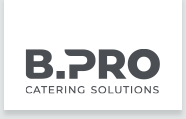CAN STAINLESS STEEL RUST?

Not all steel is the same: a brief lesson on materials science.
It's an interesting question: can stainless steel rust? Before we go into it in more detail, let's clear up a couple of important terms. It's hard to believe, but the term "steel" is used to refer to more than 5,000 different types, the composition of which means they can have completely different properties. Here is a rough definition of terms:
Steel
is a material made mostly from iron and a carbon content of less than 2.06%. Steel can be both hot- and cold-formed – in other words it can be forced, bent, rolled or drawn. Iron-carbon alloys with a carbon content of more than 2.06% are known as cast iron.
Stainless steel
is the name for particularly pure steel. In addition to iron, steel always contains quantities of unwanted phosphorus and sulphur (known as iron by-products). These elements have a negative effect on the application properties. Therefore, steel may only be called stainless steel if phosphorus and sulphur make up less than 0.025% by mass in the alloy. (Alloy = mixture of at least one metal and one or more other chemical elements)
Corrosion-resistant stainless steel
is used to define stainless steel whose alloy has more than 10.5% chromium. The high chromium content causes a protective layer of chromium oxide to form on the surface of the material (known as the passive layer). This layer prevents the oxygen in the air from reacting with the iron in the steel, which would cause it to rust. After all, rust occurs when the iron in the steel reacts with oxygen and water. Chemically, rust is oxidised iron. Rust is porous and rusty areas promote the further corrosion of the metal until it completely disintegrates. This is precisely what the passive layer of chromium oxide protects against on stainless steel.

Protective layer with self-healing powers
Since corrosion-resistant stainless steel has this thick chromium oxide protective layer, it cannot rust – or can it? The protective layer of chromium oxide is "self-healing". This means that if the protective layer is damaged at one point, for instance by mechanical impact, a new protective layer immediately forms over the area because the chromium from the steel automatically combines with air to make chromium oxide (= protective layer = passive layer).
Self-healing needs cleanliness and oxygen
A self-renewing protective layer – that sounds amazing. However, there is a small catch: the chromium oxide protective layer can only form and remain intact if the surface is clean. Continuous contamination through environmental influences, such as exhaust gases, soot particles, cooking salt or chloride-containing liquids, can damage the protective layer. This can then lead to the formation of real rust (corrosion) – even on "corrosion-resistant" stainless steel. Regular cleaning of the surfaces is therefore a must in order to ensure that the self-healing power of the passive layer works.
Practical tip: regularly empty and clean stainless-steel containers! After all, the protective layer can only form if oxygen is present. But if, for example, the bain-marie well is always filled with water, corrosion may occur – there is no contact with oxygen in the air, which is necessary for the passive layer to form.
Good to know:It usually takes quite a bit of time and poor conditions for corrosion-resistant stainless steel to corrode. Fortunately, brown rust deposits on stainless steel are rarely a sign of real corrosion. These are usually just rust particles from the environment that have settled above the protective layer on the workpiece – so-called flash rust. Flash rust can be easily removed from the surface by cleaning.
Conclusion: Under certain poor conditions, even corrosion-resistant stainless steel can rust. To prevent corrosion from taking hold, surfaces should therefore be regularly cleaned with a suitable agent.

Video: Can stainless steel rust? [German]



